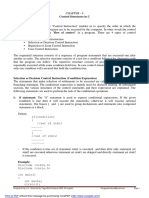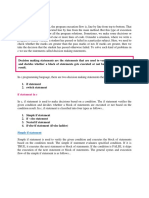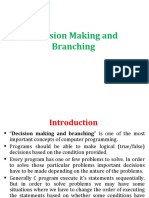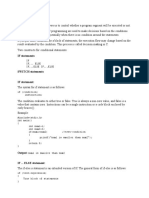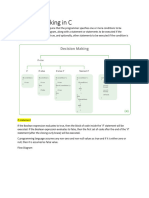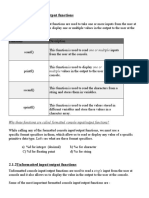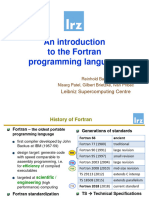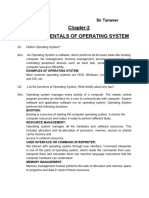0% found this document useful (0 votes)
9 views12 pagesDecision Making Using If
The document discusses decision-making and branching in C programming, highlighting the use of conditional statements such as if, if-else, nested if-else, else-if ladder, and switch case statements to control program flow based on specific conditions. It provides syntax examples and flow diagrams for each type of statement, along with practical coding examples demonstrating their usage. The document also includes examples related to salary adjustments, voting eligibility, finding the largest number, and a grading system.
Uploaded by
saranyaCopyright
© © All Rights Reserved
We take content rights seriously. If you suspect this is your content, claim it here.
Available Formats
Download as PDF, TXT or read online on Scribd
0% found this document useful (0 votes)
9 views12 pagesDecision Making Using If
The document discusses decision-making and branching in C programming, highlighting the use of conditional statements such as if, if-else, nested if-else, else-if ladder, and switch case statements to control program flow based on specific conditions. It provides syntax examples and flow diagrams for each type of statement, along with practical coding examples demonstrating their usage. The document also includes examples related to salary adjustments, voting eligibility, finding the largest number, and a grading system.
Uploaded by
saranyaCopyright
© © All Rights Reserved
We take content rights seriously. If you suspect this is your content, claim it here.
Available Formats
Download as PDF, TXT or read online on Scribd
/ 12
























